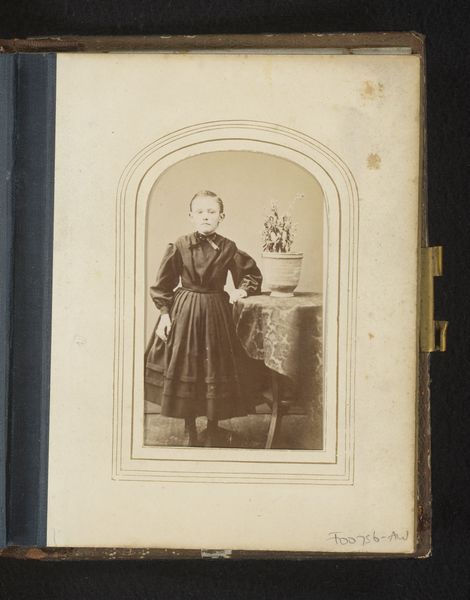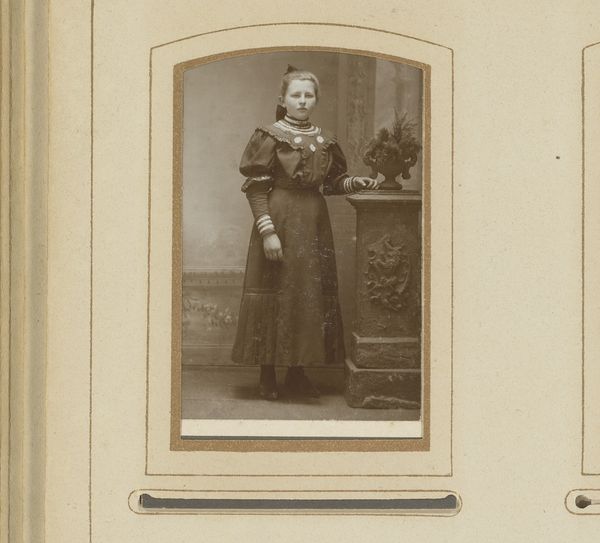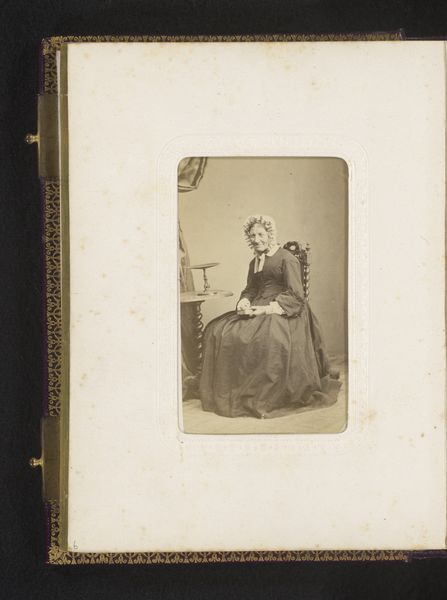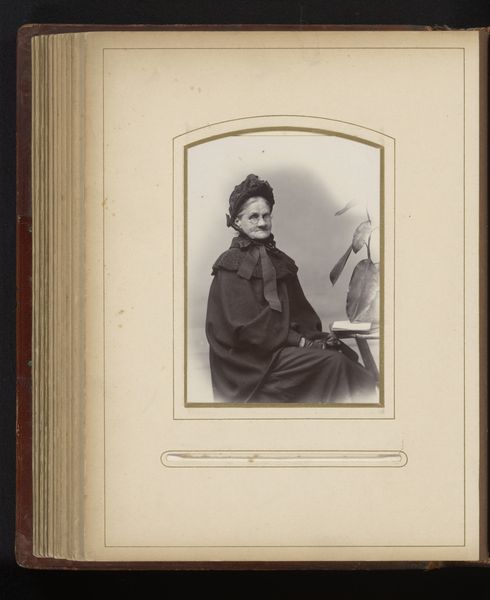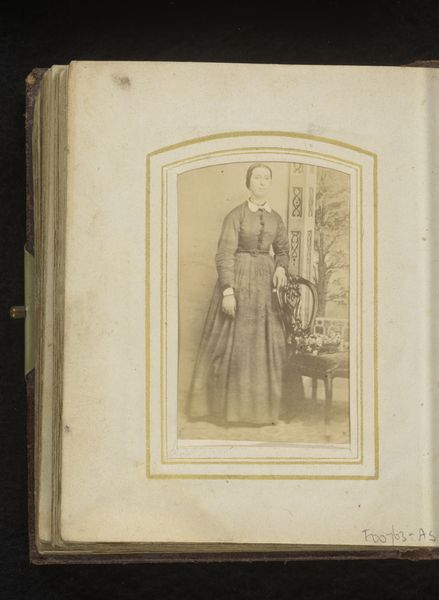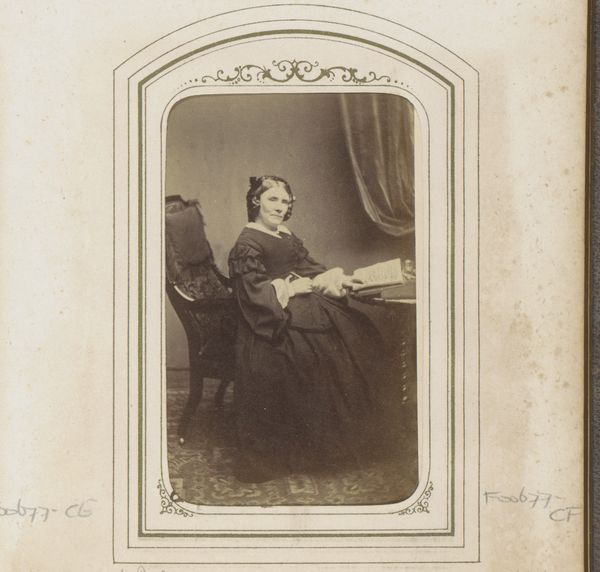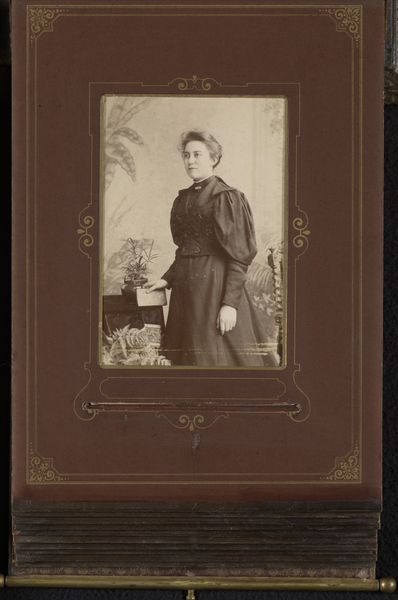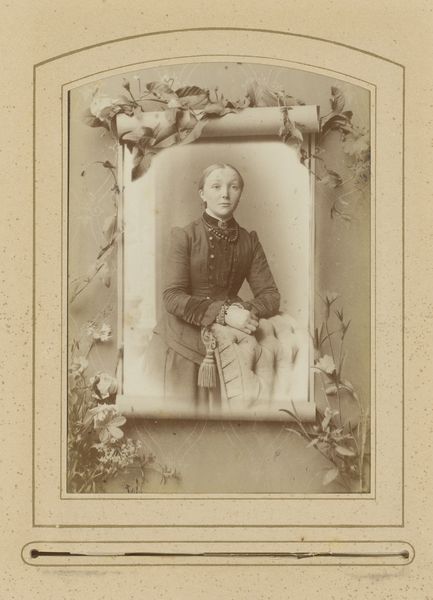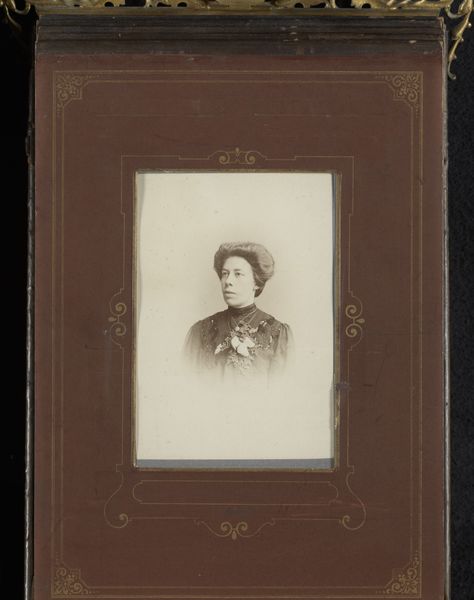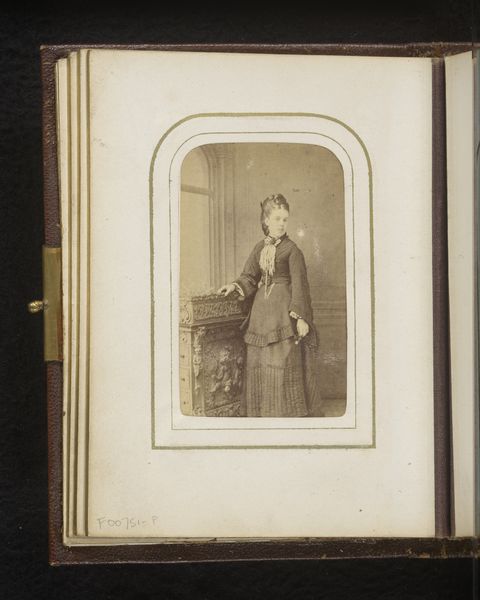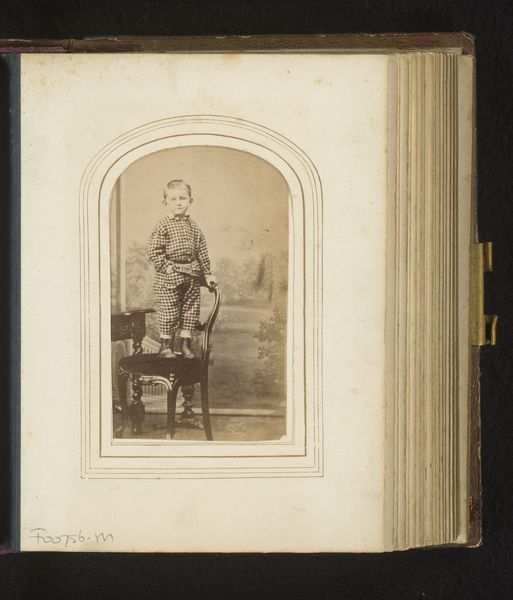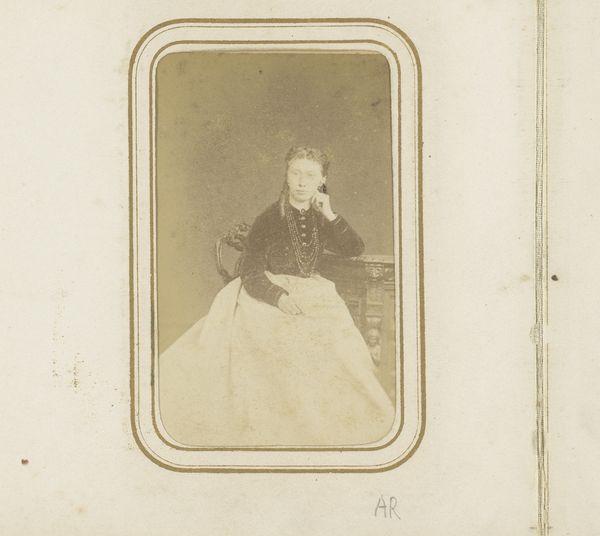
photography
#
portrait
#
photography
#
genre-painting
#
realism
Dimensions: height 142 mm, width 93 mm
Copyright: Rijks Museum: Open Domain
Curator: I’m immediately struck by how intimate and composed this portrait feels. Like catching a glimpse into someone's parlor, maybe. Editor: Absolutely, it possesses a quiet domesticity, though steeped in rigid social conventions. This work, called “Portret van een zittende vrouw,” roughly translated to “Portrait of a Seated Woman,” offers a glimpse into the constraints and performativity inherent in representing women during its era. Its date is estimated between 1880 and 1920. Curator: It feels like more than just a record. I wonder what the artist intended for this to convey; it doesn’t feel particularly groundbreaking from a composition perspective. More like someone capturing an elegant matriarch who carries the burden of society on her shoulders. Editor: You're right, it is quite classic—firmly within the conventions of portrait photography that favored formal, staged presentations. This photograph, with its genre painting themes and leanings toward realism, serves as an interesting mirror reflecting not just an individual but broader attitudes towards class, status, and the idealised image of women within Western society. Think about how limited her sphere might have been. Curator: Right! This photograph presents the constructed image, a controlled narrative devoid of true emotional expression; it looks so cold to me, somehow. Editor: Indeed. We need to consider the performative aspects of gender and identity at the time. What was a woman allowed to "be" versus what was she expected to represent? How much agency did she have in choosing this pose, this outfit, this background? Curator: She appears composed in this small world—though not the world I would have chosen to occupy at that time. I feel sorrow that I would feel constrained as she likely was. Editor: It also makes me consider who this woman might be beyond the lens. We can imagine the layers of her story, hidden beneath the surface of social acceptability, offering us an intersectional reading between what's visible and what's forcefully concealed. Curator: Thinking of how things have changed...and stayed the same. Editor: Exactly. Perhaps this work allows us not just to remember the past, but re-imagine a more inclusive and representative future.
Comments
No comments
Be the first to comment and join the conversation on the ultimate creative platform.
